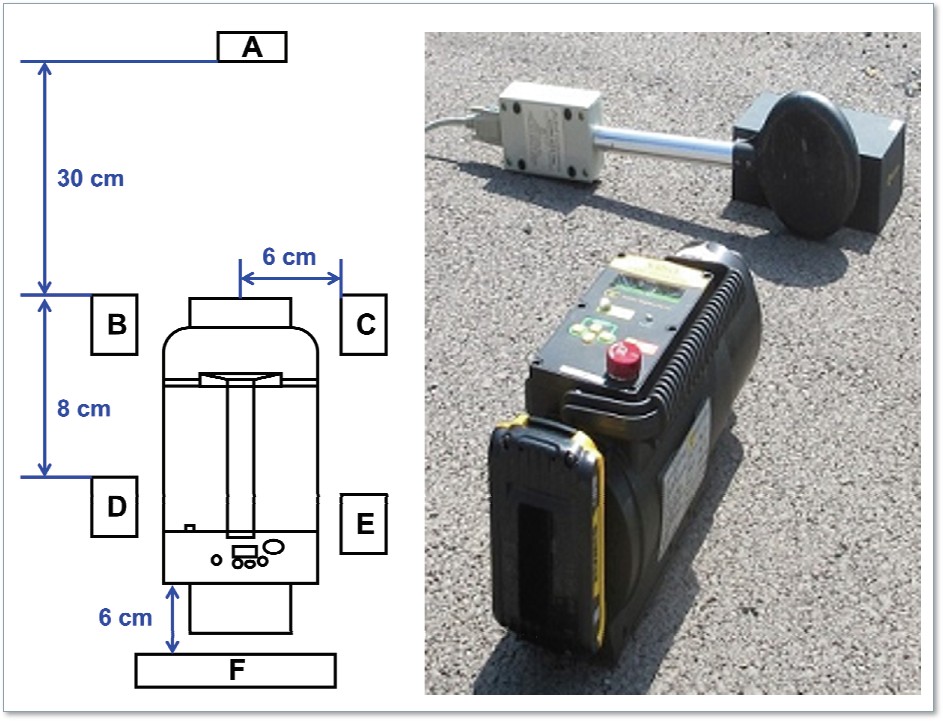Rethinking dosimeter assignment for military radiation safety
Focusing on comparative performance of thermoluminescent dosimeters (TLDs) and electronic personal dosimeters (EPDs) under portable x-ray exposure
DOI:
https://doi.org/10.37944/jams.v8i1.273Keywords:
personal dosimeter, thermoluminescent dosimeter (TLD), electronic personal dosimeter (EPD), military radiation safety, portable X-ray generatorsAbstract
The increasing use of portable X-ray generators in military operations—particularly for explosive detection and counter-terrorism—has highlighted the need for a radiation safety strategy tailored to field-based, low-dose environments. This study evaluates the performance of thermoluminescent dosimeters (TLDs) and electronic personal dosimeters (EPDs) under controlled pulsed X-ray conditions using the XRS-3 generator, focusing on their sensitivity, dose-response characteristics, and operational suitability in military contexts. The results showed that while TLDs exhibited high accuracy in cumulative dose tracking, they failed to detect radiation beyond 3 meters or at low pulse counts. In contrast, EPDs—although they showed some inconsistencies in cumulative dose measurements under low-dose conditions—successfully detected radiation at all distances and pulse settings. Their ability to provide immediate feedback and detect fluctuations in real time makes them more suitable for dynamic radiation monitoring in military field environments. The study provides a solid foundation for revising current military dosimetry protocols in current military radiation safety management practices.
Metrics
References
Aswal, D. K., & Chandra, A. (2024). Ionizing Radiation Measurements. In Handbook on Radiation Environment, Volume 2: Dose Measurements (pp. 1-17). Singapore: Springer Nature Singapore. https://doi.org/10.1007/978-981-97-2799-5_1
Bolognese-Milsztajn, T., Ginjaume, M., Luszik-Bhadra, M., Vanhavere, F., Wahl, W., & Weeks, A. (2004). Active personal dosimeters for individual monitoring and other new developments. Radiation Protection Dosimetry, 112(1), 141–168. https://doi.org/10.1093/rpd/nch286
Golden Engineering. (2018). Golden Engineering XRS3 User Manual. https://www.manualslib.com/manual/2423335/Golden-Engineering-Xrs3.html?page=16
Henderson, D., Mark, S., Rawlings, D., & Robson, K. (2022). Portable X-rays–A new era?IPEM-Translation, 3–4, 100005. https://doi.org/10.1016/j.ipemt.2022.100005
Hou, B., Chen, Q., Yi, L., Sellin, P., Sun, H. T., Wong, L. J., & Liu, X. (2024). Materials innovation and electrical engineering in X-ray detection. Nature Reviews Electrical Engineering, 1(10), 639-655. https://doi.org/10.1038/s44287-024-00086-x
ICRP. (1997). General Principles for the Radiation Protection of Workers. ICRP Publication 75. Ann. ICRP 27(1). https://www.icrp.org/publication.asp?id=ICRP%20Publication%2075
Ipe, N. E. (2021). Area and individual radiation monitoring, In Darafsheh, A. (Ed.), Radiation Therapy Dosimetry: A Practical Handbook (1st ed.), 185–210. CRC Press. https://doi.org/10.1201/9781351005388
Korea Foundation for Nuclear Safety. (2022). 2021 Radiation and Nuclear Safety Status Survey.
Korea Foundation for Nuclear Safety. (2023). 2022 Radiation and Nuclear Safety Status Survey.
Korea Foundation for Nuclear Safety. (2024). 2023 Radiation and Nuclear Safety Status Survey.
Korea Foundation of Nuclear Safety. (2013). Basic education manual for radiation workers – General field (new trainees). Republic of Korea.
Kry, S.F., Alvarez, P., Cygler, J.E., DeWerd, L.A., Howell, R.M., Meeks, S., O’Daniel, J., Reft, C., Sawakuchi, G., Yukihara, E.G. & Mihailidis, D. (2020), AAPM TG 191: Clinical use of luminescent dosimet ers: TLDs and OSLDs. Medical Physics. 47(2), e19-e51. https://doi.org/10.1002/mp.13839
Lee, B., Kim, T., & Lim, Y. (2015). Performance analysis of electronic personal dosimeters (EPDs) for external radiation exposure assessment. Journal of Radiation Protection and Research, 40(4), 261–266. https://doi.org/10.14407/jrp.2015.40.4.261
Luszik-Bhadra, M. (2007). Electronic personal neutron dosemeters for high energies: measurements, new developments and further needs. Radiation protection dosimetry, 126(1-4), 487-490. https://doi.org/10.1093/rpd/ncm098
McCaffrey, J. P., Shen, H., & Downton, B. (2008). Dose rate dependency of electronic personal dosemeters measuring X- and γ-ray radiation. Radiation Protection Dosimetry, 131(2), 229–235. https://doi.org/10.1093/rpd/ncn133
Moon, S., Yoon, M., Kim, SY. & Shin, D. (2021). A new real-time personal dosimeter with position monitoring based on a scintillator. Journal of the Korean Physical Society. 78. 1133–1140. https://doi.org/10.1007/s40042-021-00075-5
Nuclear Safety and Security Commission. (2019). Investigation results and countermeasures for the radiation exposure accident of subcontracted workers at Seoul Semiconductor Co., Ltd. Republic of Korea. Retrieved from https://www.nssc.go.kr/ajaxfile/FR_SVC/FileDown.do?GBN=X01&BOARD_SEQ=14&SITE_NO=2&BBS_SEQ=45893&FILE_SEQ=2
Nuclear Safety and Security Commission. (2024). Investigation results and action plan for the radiation exposure incident at Samsung Electronics Giheung Plant. Republic of Korea. Retrieved from https://www.nssc.go.kr/attach/namo/files/000002/20240926174645693_1E891JFD.pdf
Oliveira, A. M. (2017). Optimization of an invivo verification system using tld dosimetry-metrological validation using the iso 28057: 2014 standard. [Mestrado, Universidade do Porto]https://repositorio-aberto.up.pt/bitstream/10216/110696/2/250425.pdf
Shinde, A., Mali, S. G., & Thekkuttu, S. (2022, December). Design of X-ray Generator Simulator. In 2022 International Conference on Recent Trends in Microelectronics, Automation, Computing and Communications Systems (ICMACC) (pp. 325-330). IEEE. https://doi.org/10.1109/ICMACC54824.2022.10093314
Towers, L. (2024). The design and testing of a one megaampere pulsed power system. [Master of Science, University of Alabama in Huntsville] https://louis.uah.edu/uah-theses/670
Yadav, R.K.B., Chandra, A., Meena, T., Divkar, J. K. Vikas, Mishra, A., Pujari, R. N., Narsaiah, M.V.R. & Prabath, R. (2024). Radiation Emergency Preparedness and Response. In: Aswal, D.K. (eds) Handbook on Radiation Environment, Volume 1. Springer, Singapore. https://doi.org/10.1007/978-981-97-2795-7_18

Downloads
Published
How to Cite
Issue
Section
License
Copyright (c) 2025 Journal of Advances in Military Studies

This work is licensed under a Creative Commons Attribution 4.0 International License.

This work is licensed under a Creative Commons Attribution 4.0 International License.

이 저작물은 크리에이티브 커먼즈 저작자표시 4.0 국제 라이선스에 따라 이용할 수 있습니다.






